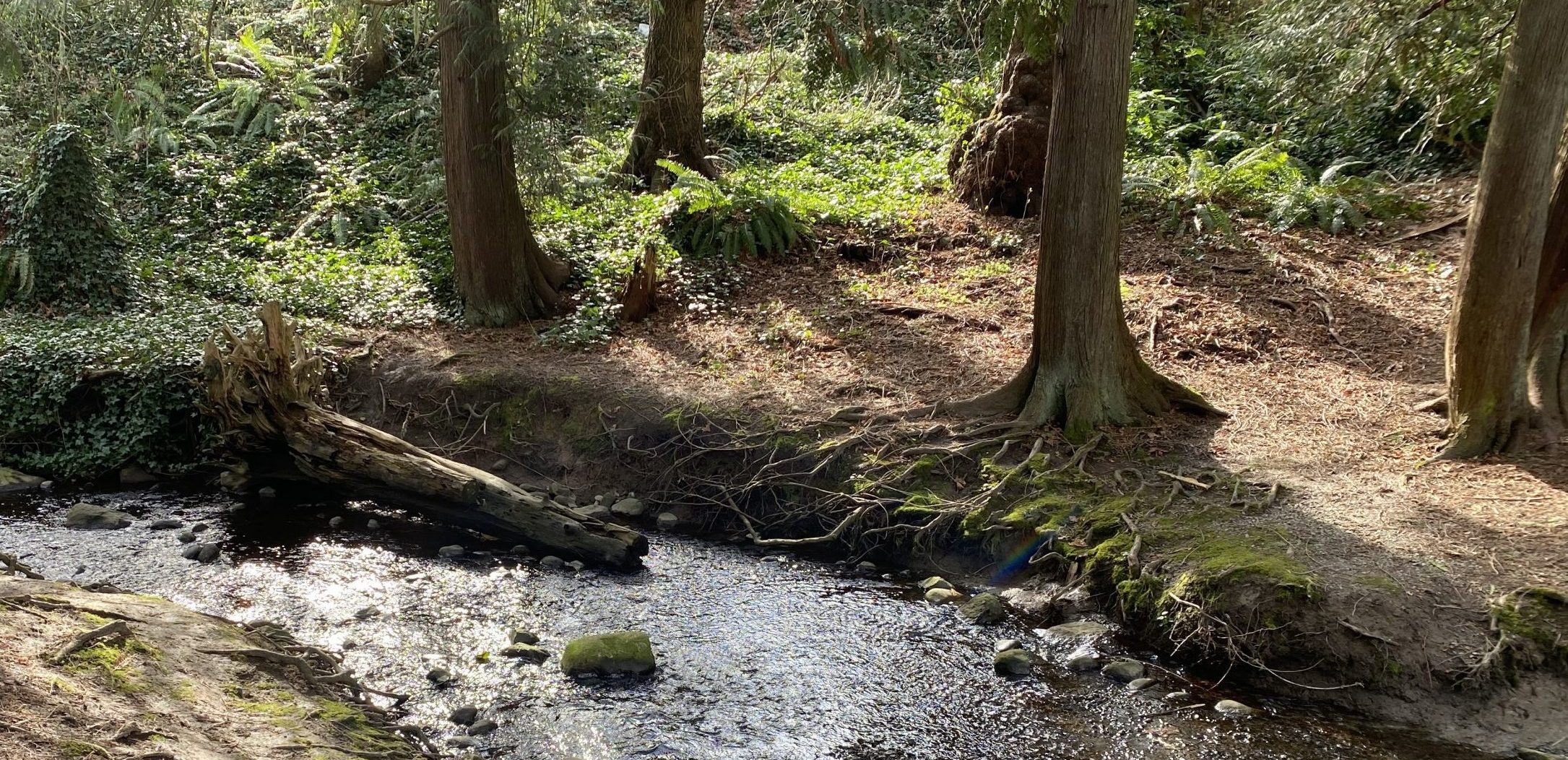Environmentally Sensitive Areas (ESAs) are areas of ecological significance within the community that typically require extra protection.
The local ecology is crucial to maintaining healthy air, water, soil and biodiversity and provides a host of ecological services (at no charge) such as storm water management, soil stability, and temperature regulation. Unnecessarily disturbing these sensitive and important environments may harm their vitality and the important ecological services they provide.
In Sidney, the Environmentally Sensitive Area Development Permit Areas (DPAs) include properties that may contain important natural features and habitat types, such as creeks, shorelines, and upland forests.
Properties within an Environmentally Sensitive Area DPA require an approved Development Permit prior to any construction or landscaping that has a significant impact on the land or water.
A Development Permit allows the Town to evaluate specific conditions and activities, identify where approvals or notifications may be required (federal, provincial, local), work with property owners to reduce the impact of development on natural areas, and to help protect and restore habitat where possible. Development permit applications undergo a review by planning staff to ensure that any proposal achieves a balance between the proposed development and environmental preservation.
The development permit application process typically runs together with building permit process and as a result does not add substantially to the time or cost of a project. It is important to note that the intent of these guidelines is to guide – not prevent – development, with consideration of the natural environment.
Details of all Development Permit Areas including guidelines, exemptions, and maps, can be found in the Town’s Official Community Plan. To determine if a property is within a Development Permit Area, refer to the consolidated DPA Map.
